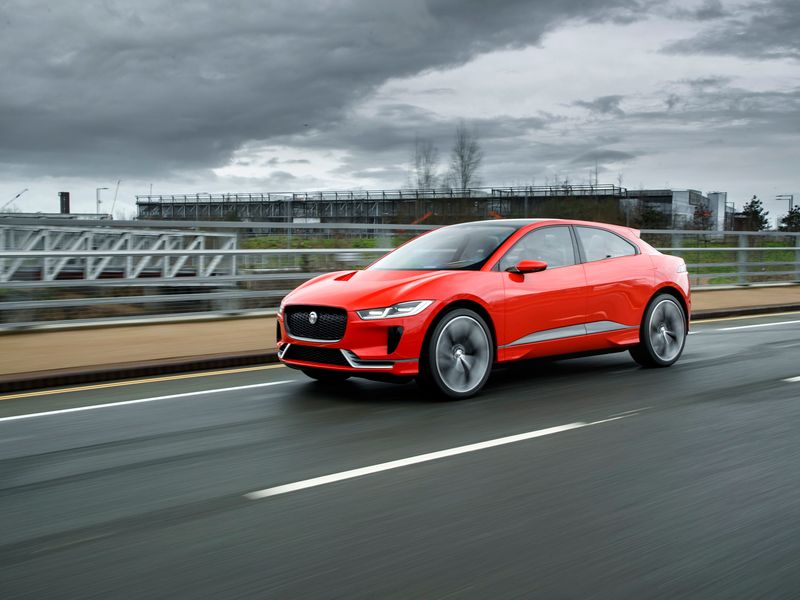
Jaguar Land Rover is teaming up with Oslo, Norway, Momentum Dynamics, an America company in Malvern, Pa., and others to test a wireless electric vehicle charging system that could eventually cut the cord out of the plug-in battery chargers in wide use today.
The system uses inductive charging, which relies on magnetic forces to transmit electricity from pads in or on pavement. An EV parks over a transmitter pad that sends electricity to receiver pads mounted on the undercarriage. Electricity flows from the receiver pad to the vehicle’s battery pack. It works much like wireless charging for mobile phones and other small electric devices.
Twenty-five Jaguar I-Pace electric crossovers are being modified by Jaguar and Momentum Dynamics engineers to accept wireless charging. The vehicles will then be shipped to Norway, where they will be placed in a taxi fleet operated by Cabonline, one of the largest taxi companies in the Nordic region. The test is scheduled to begin by the end of the year.
Andy Daga, CEO of Momentum Dynamics, which engineers and develops the pads and software, believes consumer use of inductive charging will not be the first high-volume application of the technology. EV drivers will be plugging in for a long time, perhaps another five or more years, before they have a viable option to charge wirelessly. But for the coming armada of electric delivery vehicles and work trucks, inductive charging will be key, Daga believes, to keeping those vehicles in service more hours per day.
The Oslo taxi test, which will use pads installed in the pavement in a specially designated e-taxi lane at the city’s train station, will give engineers data on charging rates and times. The goal is to ensure the I-Pace taxis don’t have to come out of service to be recharged.
“Taxicabs can’t get along on one charge per day. They have to be in service,” said Daga. “If they are not in service, they are not making money.”
Momentum has tested the concept for the past three years on a larger scale on city buses that operate in Wenatchee, Wash., between Seattle and Spokane.
In Oslo, the pads will be able to deliver the same amount of electricity at the same speed as a plug-in charger, Daga said. The I-Pace can imbibe electrons at 50 kilowatts per hour. Daga estimates that 15 minutes parked over the charging pads could add about 50 miles of range to the I-Pace. The charges will occur as a taxi driver waits for its next fare.
“There is no human interaction required whatsoever. You simply park over a pad,” said Daga. “You don’t even need to think about charging at all. It makes the connection automatically.”